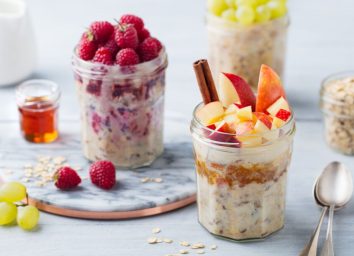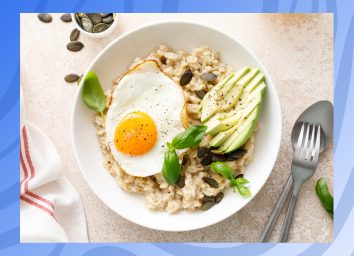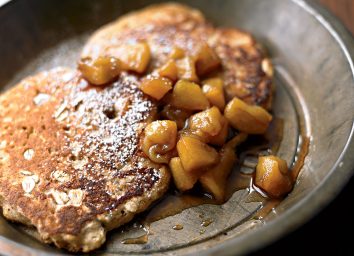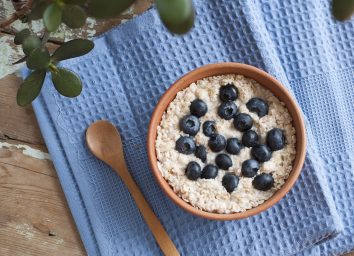All the Different Types of Oatmeal—Explained!
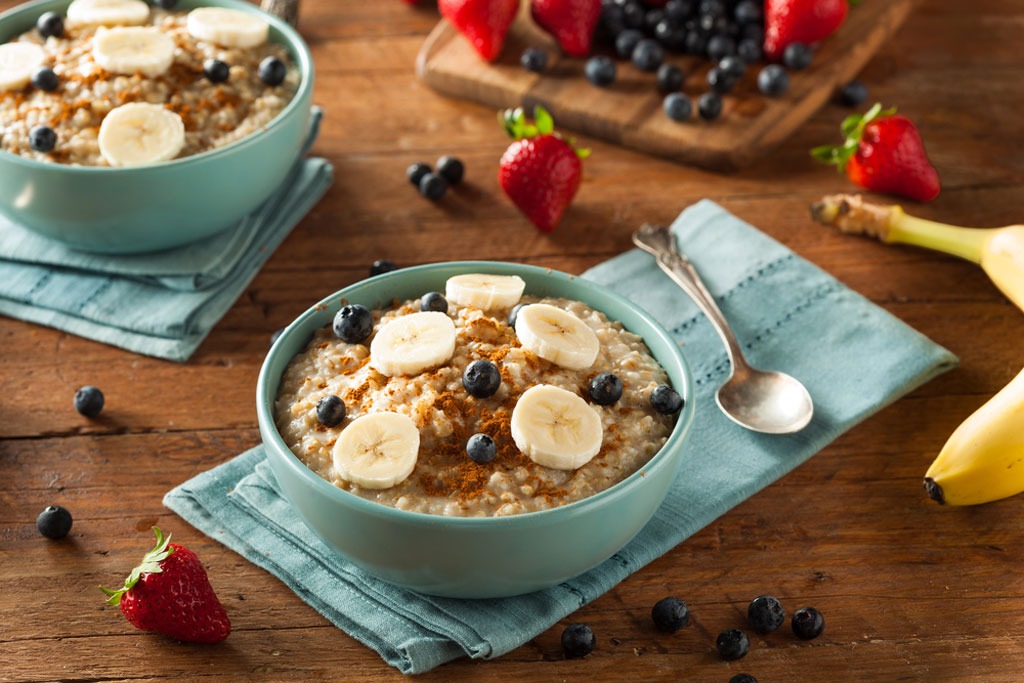
Oatmeal is the processed golden child of the nutrition world. Gasp! Did we just say processed and nutrition in the same sentence? Oh, yes we did! While “processed” is essentially a curse word in the health world, it’s not too bad when it comes to oats. All oatmeal is processed, but luckily, processing in the oatmeal industry has nothing to do with artificial ingredients and added sugar. Instead, oat processing is simply about how the whole oats (called groats) are cut and prepared for cooking. These different processing techniques are where we get our extensive list of oatmeal types that leave some of us stumped in the cereal aisle.
Getting to know your way around your oat options is well worth the next few minutes of your time. With its high levels of fiber and protein, oatmeal is a weight loss superhero in any form. Plus, it’s proven to lower your LDL cholesterol (the bad kind of cholesterol). But the different processing techniques leave certain types of oatmeal slightly better than others for your health. From steel cut oats to instant oats, we’re mapping out which oats are which—and identifying the best for your beach bod. Swapping out your oats for a healthier version is such an easy exchange to improve your overall health. Since navigating the different types of oatmeal can feel surprisingly blurry, we’re breaking it down for you so you can make a breakfast that is oat—ahem—out of this world for your health.
Steel Cut Oats
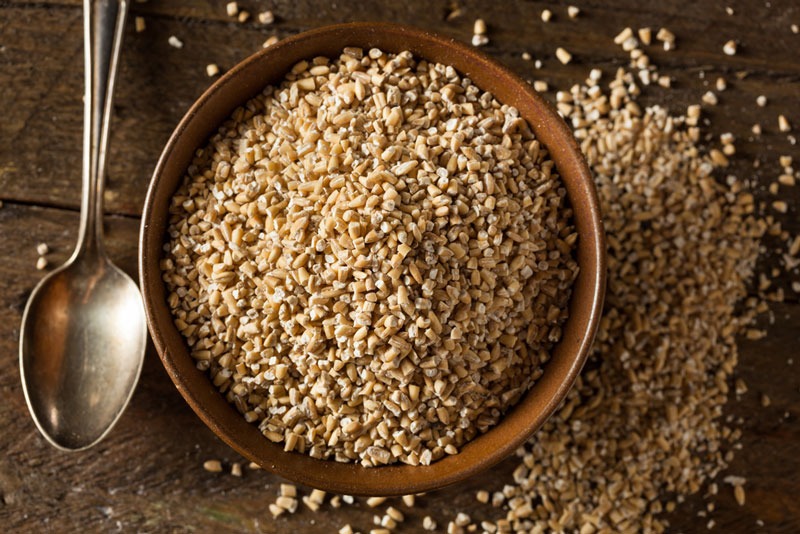
Nutrition (serving size ¼ cup dry): 170 calories, 3 g fat (0.5 g saturated fat), 0 mg sodium, 29 g carbohydrates, 5 g fiber, 0 g sugar, 7 g protein
Nickname: Irish Oats
Thick, coarse, steel cut oats are the least processed form of oats. They are simply whole oat groats cut into smaller pieces—that’s it! What does this mean? In terms of health, this is amazing news. Steel cut oats preserve all the nutrient goodness of whole groats, leaving this oatmeal with high fiber and protein counts. This will provide you with the kind of lasting energy we like to see in a good breakfast.
The fiber found in steel cut oats is known as soluble fiber—a kind of dietary fiber that our bodies cannot break down. It takes up space in your belly without getting absorbed by your blood and is low on the glycemic index (42 out of 100). Foods that increase blood sugar (foods with a high GI) cause your energy to spike and then crash, as well as overflow your blood with sugar, triggering your body to store the excess sugar as fat. So, basically, steel cut oats are the opposite of that mess.
To further clarify things, we turned to nutrition expert Isabel Smith, MS RD CDN and founder of Isabel Smith Nutrition. “The major thing we’re looking at when comparing oatmeals is the difference in fiber,” she says. “As the grain becomes more processed, we lose some of that soluble fiber and digest the oatmeal much more quickly. This means you get hungrier, faster.” So, next time you’re in the supermarket, keep your eyes peeled for oats labeled “steel cut” or “Irish.” They’ll keep your tummy full, your energy consistent, and your weight loss rolling.
Eat This! Tip: Steel cut oats are not great for baking due to their rough texture. It’s best to eat them in the traditional way—cooking them in water on the stove and then adding sweetness to taste. If you don’t want to flavor your oatmeal with fruits and sugar, spice things up with a savory oatmeal recipe!
Scottish Oats
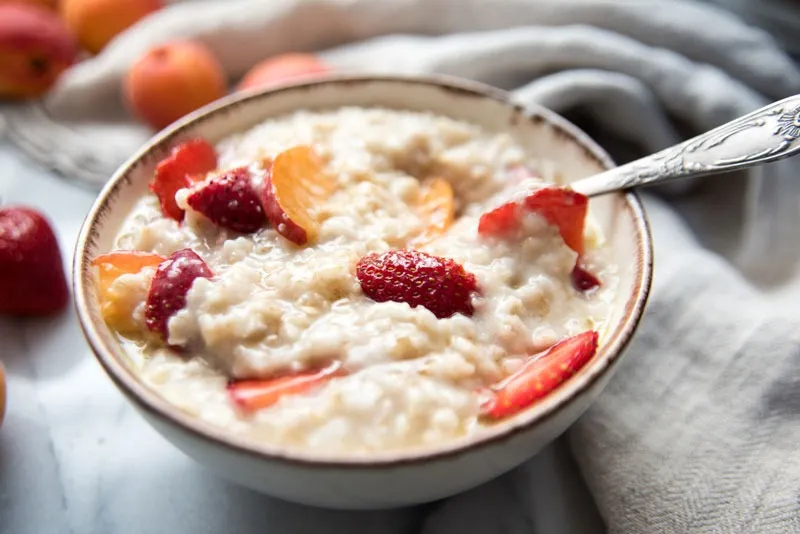
Nutrition (serving size ¼ cup dry): 140 calories, 2.5 g fat (0.5 g saturated fat), 0 mg sodium, 23 g carbohydrates, 4 g fiber, 0 g sugar, 6 g protein
Nicknames: Pinhead Oats, Porridge
Scottish oats are the next best thing to steel cut oats. Like steel cut oats, they are minimally processed. Scottish oats are traditionally prepared by grinding groats on a stone to create fine, grainy pieces of oat (small like a pinhead!). When cooked, this oatmeal turns out way more creamy and less chewy than steel cut oats. In America, we may think of this more as porridge, but to most, this is how oatmeal should be served.
So, why are these the second best option? The process of grinding oats causes a slight decrease in the fiber and protein content, which are essential for lasting energy and fullness. Plus, it makes the actual oat pieces much smaller. This is great for cooking time (Scottish oats cook about ten minutes quicker than steel cut oats!), but not great for that oh-so-important fullness factor. Your body will digest these small oats much quicker than traditional cut oats, making you hungry more quickly!
Eat This! Tip: While Scottish oats may not be #1 for weight loss, their size and texture make them a better cooking and baking option than steel cut oats.
Rolled Oats
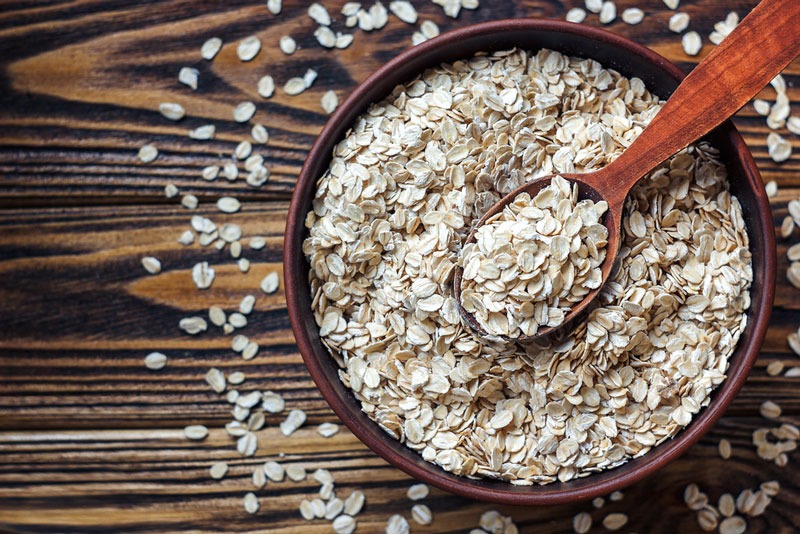
Nutrition (serving size ½ cup dry): 190 calories, 3.5 g fat (0.5 g saturated fat), 32 g carbs, 5 g fiber, 7 g protein
Nickname: Old Fashioned Oats
Rolled oatmeal is that thin, flaky oatmeal we think of when we think of traditional oats. It’s most likely what you’ll be served when you order oatmeal at a restaurant, and it takes up most of the shelf space in the supermarket oatmeal section. To process rolled oats, whole oat groats are first steamed and then run between rollers to make flattened flakes. The steaming process leaves the oats partially cooked, which increases shelf life and decreases home-cooking time (about 10 minutes). Sounds great, right? Well, they’re not perfect.
On paper, rolled oats and steel cut oats look virtually interchangeable in terms of nutrition. Unfortunately, the steaming and rolling process increase the GI of rolled oats (from 42 to 55) because it leaves them thinner and half cooked. Relative to steel cut oats, this means your body will digest these oats much quicker and cause a greater spike in blood sugar. Ultimately, this will stall the fat-burning process, although not nearly as dramatically as other oatmeal intruders that you’ll read about soon enough.
Eat This! Tip: Despite their relative nutrition to steel cut oats, rolled oats still make a great healthy breakfast option—especially in the form of overnight oats. Overnight oats are all the rage these days for their convenience and taste factor. The flaky, thin composition of rolled oats makes them the ideal oat choice for overnight oats since they quickly soak up whatever they’re saturated in. Steel cut and Scottish oats will remain crunchy even after soaking for several days!
Quick Oats
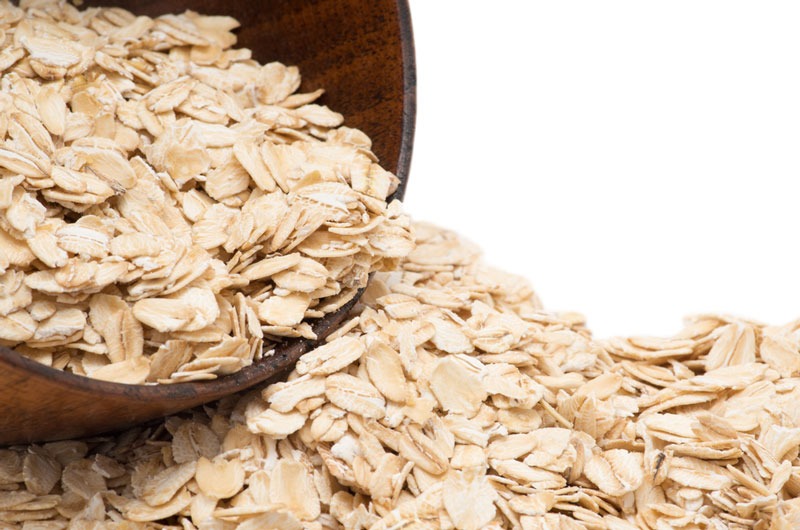
Nutrition (serving size ½ cup dry): 180 calories, 3 g fat (0.5 g saturated fat), 29 g carbs, 5 g fiber, 1 g sugar, 7 g protein
Nicknames: Quick Cooking Oats, Quick Rolled Oats
We hope you’re picking up on the pattern here! We’re getting more and more processed as we go. Quick cooking oatmeal is like rolled oats except even more processed. The oats are steamed for longer and rolled thinner. The result is a more flaky, more creamy oatmeal that cooks much quicker since it’s almost fully cooked. But if you’ve been paying attention, you know faster is not always better! This oatmeal has a GI of about 66, while regular rolled oats are slightly lower at 55. In general, 55 and lower on the glycemic index is recommended for sustained energy and increased fat burn. So, if you’re going to go for rolled oats, go for the real stuff to keep you going all day long. Plus, it’s an easy breakfast switch to keep you slim and fit in the long run.
Eat This! Tip: Due to their fast cooking time, quick oatmeal is super versatile. Plus, its awesome nutrition profile makes it easy for you to lose weight with oatmeal.
Instant Oatmeal

Nutrition (serving size ½ cup dry): 130 calories, 2.5 g fat (0 g saturated fat), 23 g carbs, 3 g fiber, 0 g sugar, 4 g protein
Nickname: Insta-Oats
If you’ve ever made yourself a packet of flavored instant oats, you may have thought it was sent from oatmeal heaven. That was until you found yourself exhausted and reaching for another cup of coffee about two hours later. Instant oats (Quaker is a great example) are the most processed form of oats. They’re steamed until they are fully cooked, rolled even thinner, then dehydrated. Yes, this is great for convenience; All you have to do is rehydrate them and they’re ready to go.
But as you know by now, this also means that instant oats take a major jump in terms of GI—83 to be exact. They also have the lowest fiber content of all oatmeals—the nutrient that our expert, Isabel Smith, stressed is so important with your oatmeal eating. But the worst part? Instant oats usually come pre-flavored, which translates to added sugar and most likely some artificial ingredients—and consuming too much sugar can make you gain weight. The result is a sugar rush-and-crash, which will leave you ravenous and tired. If this isn’t enough to convince you to be suspicious of the instant oats in your grocery aisle, how about the fact that most instant oats come with caramel coloring, the artificial ingredient that has been linked to cancer?
Eat This! Tip: Fast food oatmeal has taken off in recent years, but keep in mind that what you’re handed is probably artificial instant oatmeal. Look for a pick that packs in minimal added sugar and pairs the oats with healthy fats to get the health punch you’re looking for in your oats when you’re on the go.
